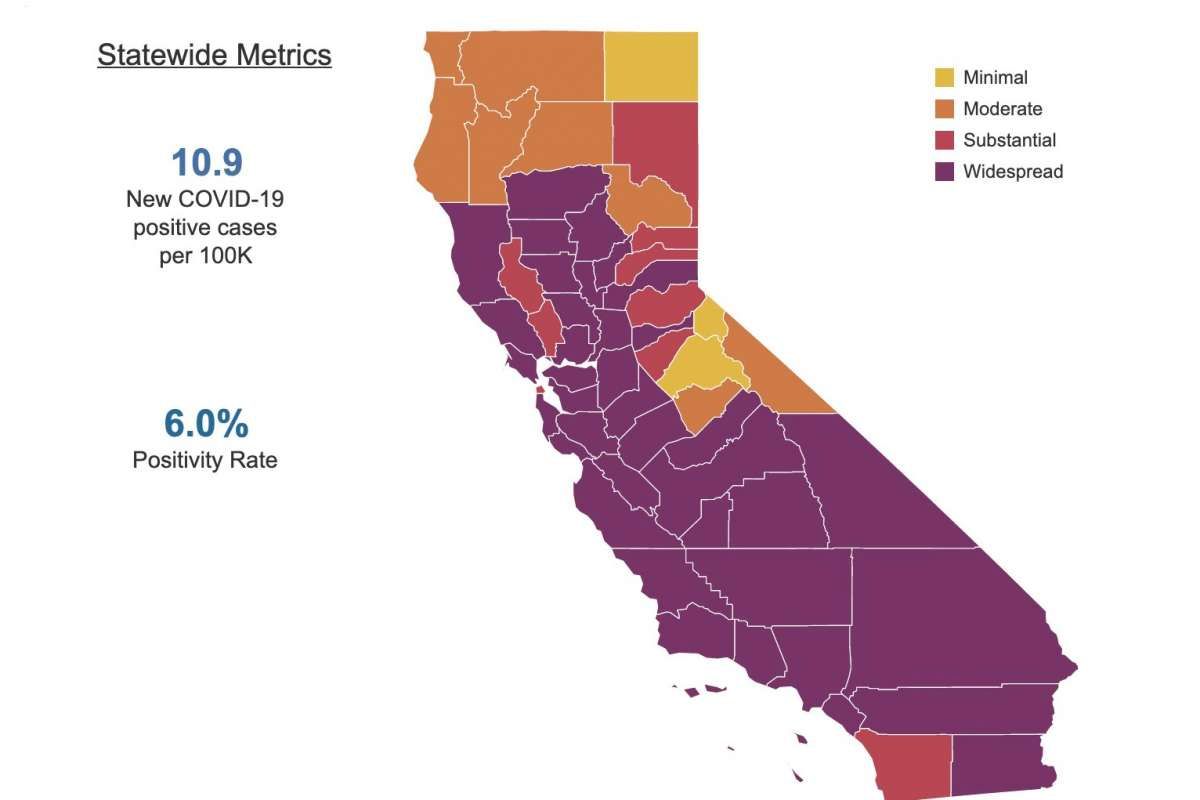In his public address today updating the state on its double-disaster fire/pandemic situation, Governor Gavin Newsom focused on improving how the state is handling its county "watch list" messaging — and slightly altering how the latest reopening guidance is going to work, going forward.
"COVID-19 will be with us for a long time and we need to adapt," Newsom said, per KPIX. "This idea that it was going to go away in the summer during the warmer months, that somehow it would disappear based on an assertion or a tweet or a headline has obviously been substituted by a different reality that we’re not only experiencing here in California but all across the nation."
With that in mind, Newsom unveiled a new color-coding system with four levels of COVID concern — replacing the former system in which counties were either on or off the state's monitoring list. The color categories assigned to each county — purple, pink/red, orange, and yellow — will determine how much of the county’s economy can be open at any given time, and the rating will be updated every Tuesday. As before, though, counties that want to maintain more strict rules can do so. So even though San Francisco is in the second or red tier, with "substantial" but not "widespread" virus spreading, which under the new state guidelines would allow restaurants to be open indoors at 25-percent capacity, SF's health department is still keeping us at only outdoor dining until further notice.


The color codes and risk levels are based on the number of new daily COVID cases per 100,000 residents, and the percentage of positive tests. If a county has 8-percent or greater positive tests, and more than 7 daily new cases per 100,000 residents, it will fall in the purple zone.
You can look up what businesses are allowed open, and how, in each county, on this page.
"We wanted to make adjustments based upon the input we received from county health officers, input we received from experts, our own experience here in the state of California, to adjust the frameworks from the old monitoring list to a more dynamic list that we hope is not only more dynamic, but is much more simple to understand," Newsom said. "Stringent, though, nonetheless in terms of its application but statewide in terms of its consequence in terms of what it covers."
It's very likely that San Francisco won't ever enter the yellow or "minimal" zone simply given the density of the city, until the pandemic is over.
And, as Newsom explained, "We don’t put up green because we don’t believe that there’s a green light that says just go back to the way things were or back to the pre-pandemic mindset. Quite the contrary. These are the guidelines, the color-coded county guidelines that we’re putting forward to get us through this flu season and…work through the next few months in the state of California."
The good news is that San Francisco is no longer in the purple zone along with 38 out of California's 58 counties. We are in the pinkish-red tier along with eight other counties, and there are eight counties currently in the orange tier. Only three (very rural) counties are in the yellow tier.
More indoor businesses will be able to reopen in SF in the coming months if we make it into the orange tier, and if the county health department agrees.

